A Brewpub’s Collapse 20 Years Ago Sounds Familiar
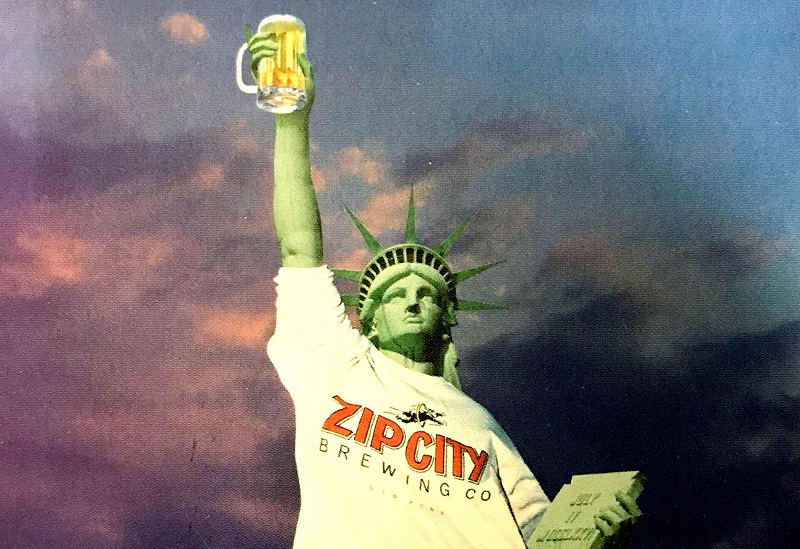
(Logo design by John Bloch Design, illustration courtesy Kirby Shyer)
On the morning of April 7, 1997, Kirby Shyer, the owner of the recently shuttered Zip City brewpub at Fifth Avenue and 18th Street in Manhattan, poured 3,100 gallons of Belgian tripel down a sewer drain.
A New York Times reporter was there to witness the carnage.
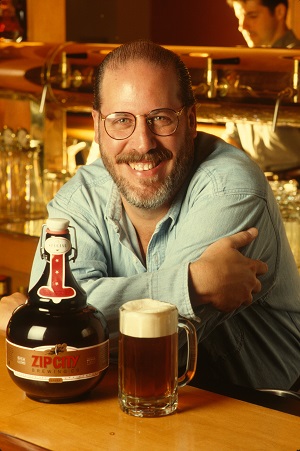
(Photo courtesy Kirby Shyer)
“Once it was over, it was over,” Shyer told the journalist, explaining that federal regulations required him to destroy the beer he had on hand when his seven-year-old brewpub closed.
The reason for the closure might seem familiar to those following small-batch brewing today: a lot of competition.
Zip City—named for a fictional town that novelist Sinclair Lewis invented to satirize American business—had been the oldest operating brewpub in the nation’s largest city. It was celebrated for its German-style lagers and wheats, and a seasonal doppelbock, and for the aesthetic charm of its 150-seat restaurant portion, which included an oval bar enwrapping copper-clad tanks.
For six years, according to Brooklyn Brewery cofounder Steve Hindy, Zip City “did a booming business.” Then the bottom fell quickly out in 1997, and Shyer had to close.
Competition and Collapse
What happened? As Shyer explained, the competition simply became too fierce.
When Zip City launched in November 1991, there were no brewpubs in New York City. The pioneers of Gotham brewpubs, New Amsterdam and Manhattan Brewing, had shuttered. Shyer himself followed the arc of both brewpubs while working in the family eyeglass-manufacturing and -importing business in Queens.
He eventually traveled west to visit the original Pyramid brewery in Washington state and the Schirf Brewing Co.—a.k.a. Wasatch—in Utah. The bug bit, and he realized he could start a brewery back home (he had grown up in the New York City suburbs and now lives in Connecticut).
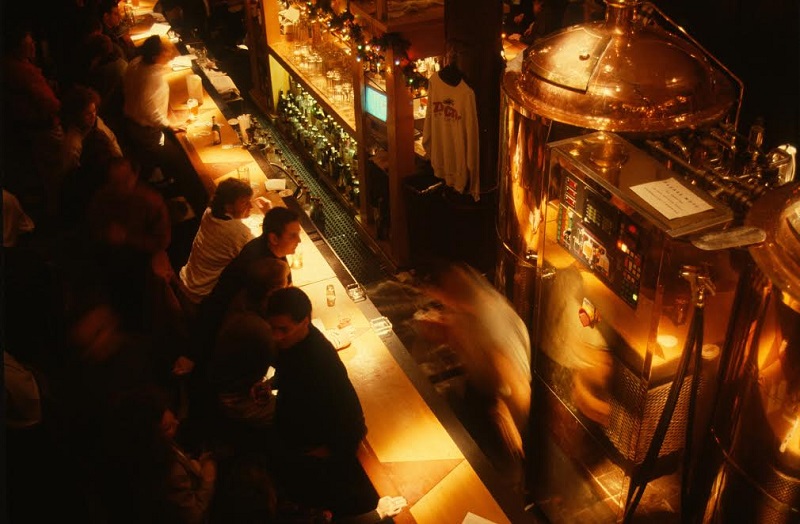
(Photo courtesy Kirby Shyer)
For a while there, Shyer’s Zip City had the New York brewpub scene to itself because of New Amsterdam and Manhattan’s closures.
But others soon piled in as what was then called micro-brewing picked up nationwide, never mind locally. Brewpubs in particular multiplied rapidly in the early 1990s. There were at least 360 in operation by 1995 and perhaps as many as just under 500, according to the Brewers Association—nearly double the number of standalone production breweries.
This represented phenomenal growth: There had been exactly three brewpubs nationwide in 1983, one in Washington state and two in California.
In New York City, the number of brewpubs quickly grew from zero to one with the 1991 opening of Zip City to at least six by 1997, the year Zip City closed.
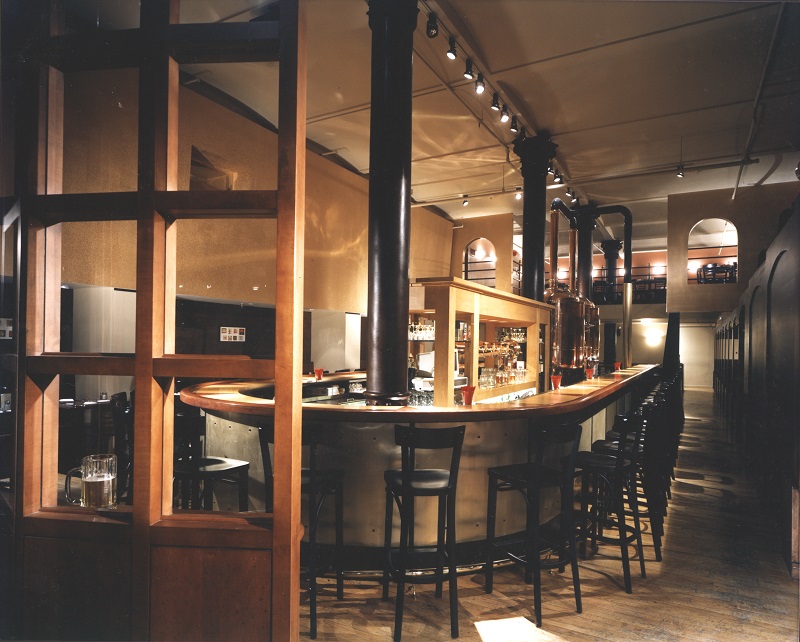
Zip City’s architect, Bennett C. Fradkin, now a partner at Fradkin & McAlpin Architects, was a partner at the former Fradkin Pietrzak Architects when he designed Zip City. (Photo by Paul Warchol, courtesy Fradkin & McAlpin Architects)
Brewing in general had picked up in the city during that period. A July 1996 event called the New York City Brewpub Crawl Marathon, then in its second year, stopped at 12 brewpubs, including Zip City, and involved the opportunity to quaff 72 different beers.
And micro-brewed brands from beyond the city were washing ashore with regularity, plunking more beer choices in front of New York consumers than at any time in probably living memory.
Shyer’s lament about too much competition did not ring hollow, then. After all, there were not only more options than anyone could remember, there was also a much smaller audience.
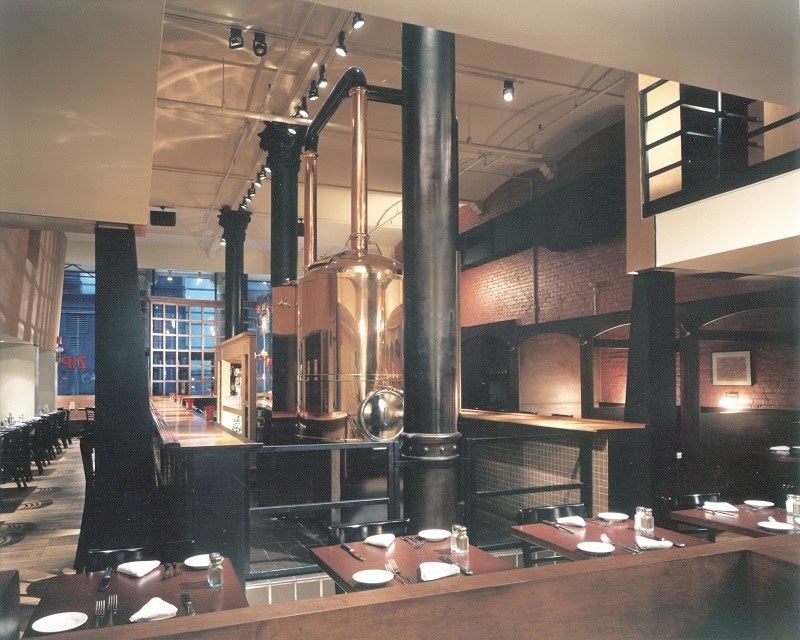
(Photo by Paul Warchol, courtesy Fradkin & McAlpin Architects,)
Whereas today’s smaller breweries might claim 10 to 15 percent of the national market and much more than that in bigger cities such as New York, two decades ago their slice of the American beer pie was much thinner—and it did not generate nearly as much consumer interest as today’s beer scene, with its social media, review apps, festivals, etc.
Yet, while Zip City’s collapse was very much of its time and place in mid-1990s New York, its decline and fall seems very familiar.
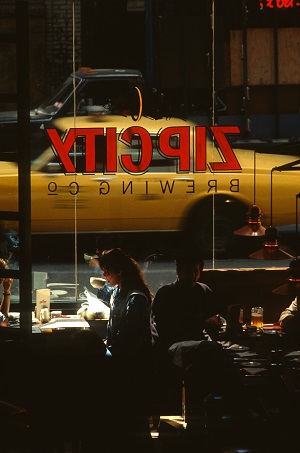
(Photo courtesy Kirby Shyer)
In October 2016, Stone Brewing, which started on the other side of the continent around the same time Zip City was closing, announced it was laying off about 5 percent of its workforce. The San Diego County-based operation blamed the move in part on “the further proliferation of small, hyper-local breweries.”
It was a telling example of a phenomenon that seems to have crept up on Stone’s industry while it was fretting the mergers and acquisitions of macro-breweries such as Anheuser-Busch InBev. There are a lot of breweries out there—more than at any one time in American history—and still a relatively small marketshare.
It was a reality that Kirby Shyer 20 years ago would have understood immediately.
The Death of Microbrewing Greatly Exaggerated
There is a silver lining for today compared with back then. Thanks in part to Shyer inviting the nation’s most prominent newspaper to witness good American-made beer going literally down the drain, the media feasted on predictions that this whole micro-brewing trend would soon follow Zip City’s tripel.
The New York Post quoted a retail consultant who took particular aim at brewpubs: “The bloom is off the rose with brewpubs…Brewpubs are complicated businesses which require a lot of capital, a public that drinks a lot of beer and a lot of traffic, and we don’t have these components here in the U.S.”
And here was The New York Times: “Zip City’s closing, and the fact that Mr. Shyer couldn’t sell his quality craft beer, even at a discount, has some in the beer industry talking about a shakeout or, even worse, a backlash among beer drinkers.”
There was a backlash—many consumers did ditch micro-breweries—and a shakeout saw dozens of operations off throughout the late 1990s.
We know now, though, that the death of the trend was clearly exaggerated.
Read more Acitelli on History posts.
Tom Acitelli is the author of The Audacity of Hops: The History of America’s Craft Beer Revolution and the forthcoming Whiskey Business: How Small-Batch Distillers Are Transforming American Spirits. He is at work on a biography of Michael Jackson.

That NY Times article is a trip!
I had quite a few drinks at Zip City, and was sad to see it go. For a while it was a great scene with it and Heartland Brewery being practically around the corner from each other in the Union Square area. The Zip City space was taken over by The City Bakery, and remains a striking space…
http://thecitybakery.com/locations/
As we continute to move into the future, I think we will continute to see the true Micro/Craft brews thin. My allegiance to the Micro/Carft brew artisans is absolute. Unfortunately, for most of the American consumers, it is not. The majority of beer consumers in this country are satisfied with the sub standard quality and taste of “big brew.” Years ago, I made the decision to NOT consume “big beer.” If I cant enjoy a true Micro brew, I am not drinking, give me iced tea or coffee which is much better than big brew. The Micro and true Craft Industry has NOT done a responsible job at protecting their namesake. Sorry, Sam Adams is NOT craft beer, Ballast Point dedicated to the craft? One sell-out after another and they all (are allowed to) take the name “craft” with them. If the real Micro industry is going to survive, they had better get it in gear on so many different facets, too numerous to mention and beyond the scope here. Long live TRUE Micro/Craft beer. Its a beautiful thing.
Sam Adams isn’t craft beer? Without them, much of the craft revolution never happens. I love how some consumers are obsessed with drawing a specific imaginary line determining whats “craft” and whats not. Where do we really draw it? Lagunitas (partially owned by Heineken), Sam (still independent), Ballast Point (owned by Constellation) — why cant we just call a spade a spade and enjoy great beer regardless of who owns the means of production? Plus “big brewers” are often the ones whose technological innovations get handed down to the smaller guys and allow us to enjoy the local artisinal products.
It was a different world 🌎 In brewpubs back then. NYC had a culture all its own regarding all things pub and bar related. I was there as a sales rep for Anchor Brewing and we were an early entrant into the NY craft beer scene. I had a good and successful run with our products despite the local competition. Kirby’s venture and its ultimate failure had a lot to do with the huge cost of doing business in Manhattan rather than local competition. For the population of Manhattan there were an insignificant number of competitiors. Kirby is was unfortunately a little ahead of the ciurve. A bit of research will show that all virtually all of the early brewpubs in Manhattan failed. For many different reasons of record but it all came down to the cost of the lease rather than the competition who were mostly struggling with their own issues and regarding the astronomical cost of doing business in New York.